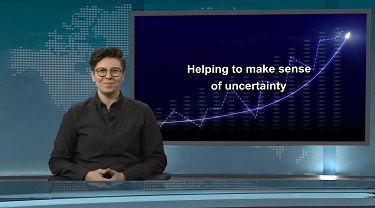
There were plenty of ups and downs throughout the world in 2019. From Brexit and the Canada-United States-Mexico Agreement (CUSMA) negotiations to the United States-China trade dispute and fears of a recession. This made for a choppy voyage into 2020. On the bright side, CUSMA is on its way to being ratified, Brexit has passed, and the world’s two main superpowers have signed Phase 1 of a trade deal.
While the outlook appears better than it was six months ago, there’s still a lot of noise and uncertainty, which leaves you wondering: what’s going on and how will this impact my business?
Data helps make sense of the noise and offers a clearer picture of what’s going on. It allows you to dig a little deeper to pull out the real story. When our Economics team analyzes Export Development Canada’s country risk ratings for 2019, we were able to draw some broad conclusions. We saw that sovereign risk was relatively concentrated and that there’s more stability in ratings than we would expect, given the rise in policy uncertainty. While we did downgrade more sovereign ratings than we upgraded in 2019, many markets remained stable throughout the year. In fact, according to our analysis, fewer than 10% of markets suffered a sovereign rating downgrade in 2019. The vast majority were in emerging markets and more than three-quarters were in Latin America, the Middle East and Africa. Of note, high potential markets such as Argentina, Nigeria and South Africa were among those downgrades.
Looking at the year ahead, some emerging markets are facing a challenging outlook, with mounting debt, crises of confidence and political volatility—which we believe traces back to the commodity boom. High commodity prices and low interest rates in developed markets led to a deluge of lending into emerging markets starting in 2008 and rebooting in 2015 because of higher interest rates in emerging markets. Half of all lending flows went to non-financial corporates in emerging markets. The lending was also concentrated in fewer than 20 markets. Sovereign risk has increased in places, like Argentina and South Africa, as tightening liquidity for higher-risk markets exposes vulnerabilities and raises debt-rollover risks. That said, most sovereigns are more stable than not. While some governments will feel the pinch as lending slows, interest rates rise and global uncertainty hammers currencies, it is increasingly emerging market corporates – including government related entities—that face troubling times, if indeed their accumulated debt wasn’t productively spent.
In addition to high levels of corporate debt in the largest emerging markets, a recurring challenge is the slew of political risks that could be exacerbated by global uncertainty. Every economic choice has political ones attached to it and is also informed by political calculations. Going into 2020, we believe that political risks are outweighing economic ones simply because lack of policy predictability is impacting investment sentiment. The brave and patient investors and corporates may see little change to their strategy as they are more resilient to short term volatility, but smaller players will think twice before jumping in to a new market.
For starters, expropriation and government interference is putting business continuity at risk. While outright expropriation of assets and investments has declined in the last few decades, government interference has increased and mutated, becoming disguised as heavy bureaucracy, corruption and, changes in the rules of the game. Zambia, for example, is facing a challenging fiscal situation and has responded in part by changing how business is done in the mining sector.
Most of our focus has been on emerging market risks, but it’s not all rosy in developed markets either. A handful of them took a bit of a turn in the last two quarters of 2019. Why? Otherwise politically stable markets have not been immune to the notable trend of underlying social and political tension leading to protests and social unrest. What we’re seeing in France is a testament to bubbling tensions in what we would normally characterize as a stable market.
The bottom line?
The bottom line? Things change on a dime. What may appear on the surface as a particular risk or trend, may in fact mask solid opportunity that outweighs the risk. Trends and themes that appear as one-off events evolve, but one market’s risk can be another’s opportunity. It takes time and resources to unearth true opportunities, but there are partners out there to help. Tap into the network and resources, including EDC’s Country Risk Quarterly.
This commentary is presented for informational purposes only. It’s not intended to be a comprehensive or detailed statement on any subject and no representations or warranties, express or implied, are made as to its accuracy, timeliness or completeness. Nothing in this commentary is intended to provide financial, legal, accounting or tax advice nor should it be relied upon. EDC nor the author is liable whatsoever for any loss or damage caused by, or resulting from, any use of or any inaccuracies, errors or omissions in the information provided.




